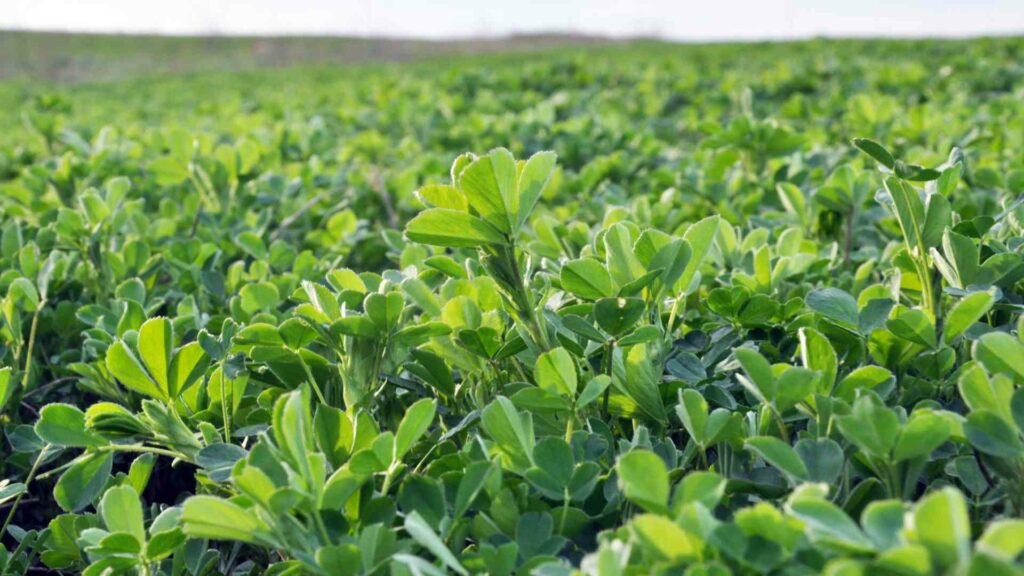Boron Fertilisers
The worldwide Fertilizer Market – including boron fertilisers – was US$ 83.5 Billion in 2020. And it is estimated to grow with a CAGR of 1.69% during the forecast period (2020-2027). The global Fertilizer Market is going to worth more than US$ 93.9 Billion by 2027.
Several fertilizer companies offer shareholders the opportunity to invest their money. These include E. I DuPont De Nemours, Bayer AG, Potash Corp., and Mosaic Co. All these firms have large market capitalizations for investors looking to get into the sector with less risk on hand.
Fertilizers need sustainability for investors to consider investing in them. However, boron and nitrogen are necessary to drive the industry. The value of fertilizer is about 300 billion dollars with growth in recent years. There will likely be more investments in fertilizers in the coming future.

General Market for Fertilizers
Fertilizers are necessary to optimize crop production. This is why they’re so important for food security in developing countries and humanitarian crises, like famine or drought. It is very hard for a country to develop without having fertilizer available because it helps them grow enough crops. With fertilizers, there are higher yields per hectare than with traditional farming methods.
The fertilizer industry has been around since about 1850. It was then nitrogen was first discovered as one of our major minerals used by plants. Before then farmers had no way to help their soil unless they were lucky enough to live near freshwater springs on land well irrigated by rainwater. Otherwise, Their only option was manure. Boron’s role in fertilizers was discovered in the 1930s when its importance to plants was revealed.
Fertilizers are used for a variety of reasons. They are applied directly to crops as an external fertilizer on their leaves or roots. And also, nitrogen fertilizers can help get rid of toxic levels of ammonia combined with other substances that may lead to water pollution.
Role of boron in fertilizers
Boron is the most important nutrient necessary for plant growth. Boron plays an essential role in flowering. This mineral gets to the crops through the use of borax, organic matter, or fertilizer. Boron helps plants grow by strengthening plant cell walls and aiding in photosynthesis.
Additionally, Boron helps to improve the efficiency of nitrogen fertilizers by making them more available to plants and plays a vital role in Food Security.
Nitrogen fertilizer has two major benefits. Firstly, it stimulates crop yields by helping plants produce proteins. Secondly, it causes some crops to break down soil nutrients more rapidly than others. It means you don’t have to use as much fertilizer if your only goal is maximizing yield.
Industrial production of fertilizer has increased necessitating a need for sustainability with boron and nitrogen that drive industry. Otherwise, shortages may become an issue.
Fertilizer investment
Fertilizer funds are mutual funds that invest in various stocks related to the production or distribution of fertilizer material.
Worldwide Fertilizer Market was US$ 83.5 Billion in 2020. And it is estimated to grow with a CAGR of 1.69% during the forecast period (2020-2027). The global Fertilizer Market is going to worth more than US$ 93.9 Billion by 2027.
The fertilizers industry sector has an estimated total value of $80 billion- US Dollars (USD) as per the market size. Growth prospects are high due to population growth, industrialization, and urbanization across developing countries such as India. Here there is expected demand in coming years from new industries located near mines or petroleum deposits.
Ways to invest in fertilizers
Invest in stocks or purchase stocks from a company that produces or sells nitrogen, boron, phosphates, crop protection chemicals. These types of investments are beneficial because they provide exposure to many different segments of this market while focusing on one area.
Fertilizer markets are complex because of the combination and variety of fertilizer materials. They are an $84 billion industry. Boron and Nitrogen make up 87% of the fertilizer market.
There is population growth but supply needs to keep pace with demand or prices will increase. So this is an opportunity for investors. There might be more room for innovation than just production. However, it is uncertain how this will affect future pricing as companies continue their research on sustainability.
Sustainable investing strategies
Investors must consider sustainability within their portfolios. It is vital because if resources dwindle over time, this will adversely affect investments that rely heavily on these. It is important to note that even a small amount of a company’s revenue or profit can be a large percentage of an investor’s total portfolio.
The natural resources in fertilizer are depleted as time passes on. Therefore, it might make sense to invest in stocks that have sustainability as part of their core values and business model. This is important because they will most likely outperform companies that do not take sustainability into account.
The outlook for future growth is uncertain. However, many factors such as population trends and demand must align for this industry to grow. With uncertainty surrounding these statistics, it may be difficult to determine what investments will produce higher returns than others. Hence, diversification should help mitigate risk.
Investors should consider sustainable investing strategies if they want to protect against economic risks. They can also meet investment objectives. Fertilizer stocks often come with high volatility and the unpredictable nature of this industry.
Growth Prospects for Investors
Fertilizers are essential in crop production across all stages from planting through harvest. It is mainly because they contribute directly to food security both domestically and internationally. Additionally, they also help with prosperity more broadly. Hence, there is a lot at stake when it comes to figuring out how best to support healthy demand growth.
There are many avenues through which one can invest in fertilizers:
- stocks of fertilizer producers;
- contracts between farmers and manufacturers or distributors that provide for the acquisition of products at a future date at an agreed-upon price;
- futures contracts on commodities like corn, soybeans, wheat, rice, and sugar cane;
- energy futures contracts on oil or natural gas.
All of these investments have their intricacies. But they share some common investment strategies. It is important to keep up with market trends so that you know when to buy or sell your shares. It depends on what the trend is. You should also monitor how the company is doing to determine if it’s a good investment.
Top fertilizer funds and their performance
The world’s top fertilizers companies are Potash Corp., Mosaic Co., CF Industries Holdings Inc., Yara International ASA, and Ammonium Nitrate Limited.
Agrium Inc.
This company focuses primarily on fertilizer production for commercial markets. It operates across Canada, United States, Latin America, Europe, and the Asia Pacific. Their shares have performed well recently with an estimated NAV at about USD 65 billion as of March 2014.
Agrium is one of the largest producers of nitrogen-based crop nutrients for food manufacturers around the world. The company serves customers from offices located in 28 countries and distributes products to over 70 countries worldwide.
Agrium Inc (OTC: AGUIF) stocks have been on an upward trend over the last five years due to their diversified portfolio of products. It includes nitrogen fertilizers and phosphate rock that it mines/produces in Canada.
Potash Corp
Potash Corp is one of the largest fertilizer producers in the world. They have estimated annual revenue of USD 13 billion. It operates mines and production facilities across Canada, United States, Brazil, Chile, China, Morocco, and Russia. Potash Corp produces potash for both commercial markets as well as agricultural use. Potash Corp is a publicly traded company on major exchanges such as NYSE and TSX.
CF Industries Holdings Inc
This US-based company manufactures nitrogen fertilizers like urea ammonia nitric acid (UAN), diammonium phosphate (DAP) ammonium sulfate (AMS). CF Industries has two segments. Firstly, the Continuous Fertilizer Production segment which produces UAN DAP AMS using its resources. And secondly, the Nitrogenous Fertilizer Sales segment where it sells its products. CF Industries offers three types of fertilizers – Nitrogen fertilizers, Potash Fertilizers, and other crop nutrients to meet the needs of consumers globally.
CF Industries had a revenue of USD 12 billion (2015). It is highly competitive in this market with competitors such as Agrium Inc., Yara International ASA, and Mosaic Co.
Alfa Aesar
Alfa-Aesar operates across Pakistan, India, Egypt, and UAE. They provide industrial chemicals for various industries like agriculture, fertilizer chemical formulations, and automotive chemicals. The company provides Consumer Chemicals Services which includes distribution/marketing services on behalf of their clients. These clients produce bulk consumer goods or branded items to sell at retail outlets worldwide.
Yara International ASA
Yara International ASA is a Norwegian multinational corporation that develops, produces, and sells crop nutrition products. The company was established in 1927 as a state-owned enterprise to produce fertilizer. But it has since grown into an international producer of food-grade minerals for the agricultural industry. Yara’s head office is located in Lysaker near Oslo, Norway.
Yara International operates its business with two segments: Consumer Solutions and Industrial Solutions (includes Fertilizer). It also owns more than 30 subsidiaries worldwide that provide input products and services to farmers around the world. In 2017, YAR generated revenues of NOK 55 billion with about 220000 employees globally.
Mosaic Co
They are a publicly traded company since 2004 and are a part of the Fortune 500. Mosaic Co is located across 9 places in North and South America. They are serving customers in more than 40 countries across the world. Mosaic specializes in phosphate mining, producing fertilizers that are used primarily on cornfields. The company has operations across North America, South Africa, Europe, and Asia. In 2016 Mosaic had revenue of USD 4 billion.
Mosaic Company (NYSE: MOS) has seen its shares grow by almost 30% in the last year. It is because of a reduction in the supply of potash and phosphates.
Growth outlook
Risks involved with investing in these particular sectors due to their heavyweight within the agricultural industry. What if there is an economic downturn that makes such investments less attractive as food prices crash and demand falls?
The outlook for growth in fertilizers is uncertain with an increasing population. But, this can be a good opportunity to invest as the demand could exceed supply. If you’re looking at companies specifically, then there’s going to need to be new technologies that innovate on how we approach agriculture. So there might be more room for innovation than just production.
The global fertilizer market is projected to grow at a CAGR of 5.8% from 2017-2025. Here China will be the largest contributor to this growth and India following closely behind. Several factors are driving this growth, including increased agricultural production in developing countries. Also, there is an increase in population in the same regions.
For investors looking for opportunities within the fertilizer industry, many companies offer a variety of products across different markets and geographies.
Sustainability is the key to future market growth
There is also an issue that faces many companies operating within the fertilizers market: sustainability. Boron and nitrogen sources are important to produce their products.
The fertilizer market needs sustainability. There have been some huge investments recently due to its strong showing within the last few years. Ideally, there should be more investment coming into this space either in the form of funds or fertilizer companies. The market is expected to grow.





